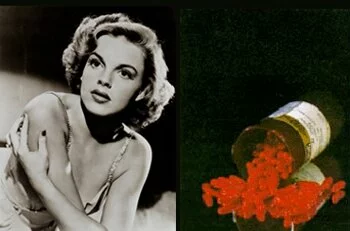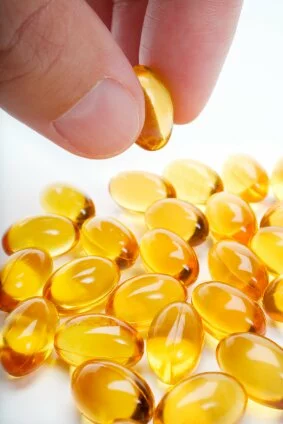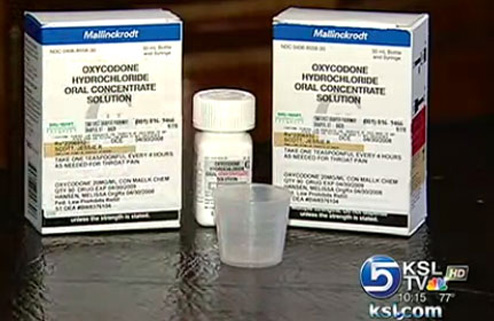
The Florida Times-Union, the newspaper of Jacksonville, FL, published an editorial today headlined, “Internet Pharmacies: A prescription for death.”
We’re not crazy about that headline, as you might imagine. We’ve worked very hard to get the news media to distinguish legitimate, licensed Internet pharmacies from dangerous, rogue pharmacies in their coverage. But you know how it is.
In any case, we were pleased that the Times-Union’s editorial used one of our blog posts to illustrate the seriousness of the problem of prescription drug abuse. The relevant excerpt:
Most people know that Elvis Presley and Marilyn Monroe both died from an overdose of prescription drugs.
Judy Garland also succumbed to a prescription drug overdose – as did Howard Hughes and Anna Nicole Smith, reports eDrugSearch.com, a medication advocacy site.
Then, there was Paige Summers. The Web site says she was 1998 Penthouse Pet of the Year.
Five years later, she was killed by an overdose of codeine and oxycodone.
For those who haven’t read it, here’s the full blog post on celebrity prescription drug overdoses.
No matter how much we try to protect ourselves from unsafe drugs and pharmacy practices, errors can and do occur. The Consumerist reports that a Utah teen was in ICU for 16 days after a Wal-Mart pharmacist gave him the wrong prescription for his strep throat.
Jessie Scott’s doctor had ordered a liquid solution of oxycodone hydrochloride to treat Scott’s pain — but the pharmacist gave him a concentrated solution, which caused Scott to consume 20 times the prescribed dose of the medication.
Ultimately, we have to trust our pharmacists — online or off — to do what they’ve been trained to do. But I would add that in my experience, when a liquid medication is concentrated — as stated on the box label, above — it calls for being diluted. This should be enough of a red flag to double check with the doctor before taking the medication.
I’m not saying this to criticize the victim in this case; what happened to him is absolutely inexcusable. But we should always try to learn from instances like this.
One of the messages I’ve been trying to communicate since I started this blog nearly two years ago is that, ultimately, you’ve got to look out for yourself when it comes to your health. Because no one cares as much about it as you do.
A new report by the National Center on Addiction and Substance Abuse at Columbia University (CASA) underscores the results of other recent online pharmacy studies – showing that’s it’s too easy to buy prescription drugs, including controlled substances, without a prescription online.
Only 15 percent of 365 sites examined in the study required a prescription. According to Reuters, CASA recommends that the United States negotiate treaties with other governments to shut down illegal Internet trafficking of prescription drugs.
In April, the U.S. Senate passed a bill that included tougher regulation for online pharmacies — but the legislation is still awaiting action in the House.
You can download the CASA report here.
And if you’re looking for a legitimate, licensed Canadian or other international pharmacy, check out eDrugSearch.com’s prescreened list of safe online pharmacies.
Here’s a CBS News report based on the CASA study:
 With all the talk of the dangers of online pharmacies in the media these days, it’s important to remind ourselves that when people are determined to do the wrong thing, they’ll do it with or without the Internet’s help.
With all the talk of the dangers of online pharmacies in the media these days, it’s important to remind ourselves that when people are determined to do the wrong thing, they’ll do it with or without the Internet’s help.
I came across a great example of this in the news the other day, where in Prichard, Alabama, police arrested a man and woman for running a drug ring selling prescription drugs illegally.
How did the woman — Angela Hurst, 28 — build her supply? By ordering them from a rogue pharmacy online?
Nope. Here’s the story (italics mine):
Narcotics officers say Hurst called in at least 200 hundred fake prescriptions to area drug stores. Hurst was allowed her to get her hands on more than four thousand pills. Police say the suspects even bragged about how easy it is to outsmart local pharmacies.
If you’re a criminal or a junkie, you’ll find a way to do illegal things. That’s the sad truth.
The following stats come from a new study of Internet pharmacies by the European Alliance for Access to Safe Medicines, as reported by the National Center for Policy Analysis:
1. 62 percent of medicines bought online are fakes.
2. 96 percent of the virtual pharmacies under study operate illegally.
3. 90 percent of Web sites supply prescription-only drugs without a prescription.
4. 94 percent of Web sites do not have a pharmacist identified on the site.
5. 86 percent of online pharmacy approval stamps are fraudulent.
Sounds like identifying a quality online pharmacy is like finding a needle in a haystack, doesn’t it? Fortunately, you don’t have to look — because eDrugSearch.com prescreens online pharmacies from the U.S., Canada and abroad so you don’t have to. Learn more about our 10 commandments of online pharmacy safety.
 The last time we heard about the Web host Go Daddy going before Congress, it was the fictional Nikki Cappelli (model Candice Michelle) in one of Go Daddy’s infamous Super Bowl commercials. In the ad, Cappelli’s tank top strap breaks as she appears before a committee discussing censorship.
The last time we heard about the Web host Go Daddy going before Congress, it was the fictional Nikki Cappelli (model Candice Michelle) in one of Go Daddy’s infamous Super Bowl commercials. In the ad, Cappelli’s tank top strap breaks as she appears before a committee discussing censorship.
Well now, Go Daddy has headed to Washington for real — and for a good cause. As Web Host Industry Review reports:
Go Daddy is urging the US Congress to accept legislation to stop online pharmacies from selling controlled drugs without a valid prescription …
Having considerable clout as the world’s largest registrar, Go Daddy sent general counsel Christine Jones to Washington, D.C. where she testified to Members of the House Judiciary Subcommittee on Crime, Terrorism and Homeland Security that the scope of illegal online drug businesses is worsening and the US needs to deal with it by passing enforceable laws…
The issue of internet pharmacies may be doubly important for Go Daddy, which has costly, round-the-clock monitoring of their hosted web pages to monitor illegal activity. The company’s abuse department suspended more than 1,300 web sites last year that sold drugs “mostly without a prescription and almost always without any age verification or parental oversight required”…
Go Daddy is speaking out in support of the Ryan Haight Online Pharmacy Consumer Protection Act of 2008, which amends the Controlled Substances Act to “prohibit the delivery, distribution, or dispensing of controlled substances over the Internet without a valid prescription.”
Some estimates say that more than 80 percent of Internet pharmacies do not require a valid prescription.
As our members know, the pharmacies in the eDrugSearch.com database are all properly licensed and accredited — and ALL require an original doctor’s prescription before fulfilling any drug order.
 Much of the spam in your e-mail inbox, and as much as 10 percent of malware on Microsoft Windows computers, is generated by the “Storm botnet,” a remotely controlled network of zombie computers running on as many as 50 million computer systems worldwide. The Storm botnet was only identified early last year, and the FBI has had little luck so far in tracking its origins or creators.
Much of the spam in your e-mail inbox, and as much as 10 percent of malware on Microsoft Windows computers, is generated by the “Storm botnet,” a remotely controlled network of zombie computers running on as many as 50 million computer systems worldwide. The Storm botnet was only identified early last year, and the FBI has had little luck so far in tracking its origins or creators.
But we’ve apparently learned one thing: Prescription drug spammers are bankrolling the Storm botnet’s growth.
According to Tim Wilson at Dark Reading, reporting on a study by IronPort, Cisco’s e-mail security unit:
More than 80 percent of Storm botnet spam advertises online pharmacy brands. This spam is sent by millions of consumers’ PCs, which have been infected by the Storm worm via a multitude of sophisticated social engineering tricks and Web-based exploits. Further investigation revealed that spam templates, “spamvertized” URLs, Website designs, credit card processing, product fulfillment, and customer support were being provided by a Russian criminal organization that operates in conjunction with Storm, IronPort says.
This criminal organization recruits botnet spamming partners to advertise their illegal pharmacy Websites, which receive a 40 percent commission on sales orders. The organization offers fulfillment of the pharmaceutical product orders, credit card processing, and customer support services.
However, IronPort-sponsored pharmacological testing revealed that two thirds of the shipments contained the active ingredient but were not the correct dosage, while the others were placebos.
Scary stuff. As we’ve been preaching for years, NEVER — under ANY circumstances — respond to an unsolicited e-mail from an online pharmacy. Legitimate pharmacies DO NOT SPAM YOU. If you respond to an e-mail solicitation, you are putting your health, and perhaps even your life, at risk.
Here’s a scary statistic:
Only a few hundred of the more than 11,000 Internet pharmacies advertising themselves as Canadian pharmacies are actually licensed by government authorities in Canada. The rest are frauds — often not located in Canada or licensed by any government entity.
Making matters worse, many of these fake pharmacies claim to be licensed — even cutting and pasting the seals from government agencies and accrediting organizations on their sites.
You can be assured that the Canadian pharmacies in our drug search engine are properly licensed and accredited. Our members also rate and review the pharmacies based on their experiences.
So don’t take any chances when ordering prescriptions online from Canada. Use eDrugSearch.com.
Obviously, a lot has been said and written linking Internet pharmacies to prescription drug abuse. But prescription drug abuse occurs every day without the Internet being involved at all. In most cases, in fact, abusers are prescribed their meds by a doctor and pick them up at the corner pharmacy.
How does this happen? Shouldn’t physicians know when they’ve overprescribed a potentially dangerous drug to a patient?
Yes, an individual doctor should know. But most prescription drug abusers don’t just go to one doctor. They go to several. It’s called “doctor shopping.”
Actor Heath Ledger didn’t die from ordering drugs over the Internet. He died because he ordered too many drugs from too many different doctors. No one doctor would have approved Ledger’s drug regimen.
The Wall Street Journal’s health blog posted a great piece last Thursday on a man who is on a crusade to end the scourge of doctor shopping in California by upgrading a database that will allow physicians to check patients’ prescription drug history. The current system is virtually useless, slowed down by outdated technology (hint: fax machines are involved.)
What we really need is a database like this on a national basis. We should require both online and offline pharmacies to use it, at the risk of losing their license if they don’t. And, once we get past the politics over Canadian drug reimportation and bring licensed Canadian pharmacies officially into the fold, we can require them to use the database, too.
Of course, the problem is that privacy advocates will say it’s a violation of our rights, and right-wing pundits will say it’s a step toward socialized medicine. But if we’re committed to keeping prescription drug abusers off the streets, it’s something we must do.
Here’s a disturbing news report on the growing problem of counterfeit prescription medications, often sold through organized crime syndicates in Third World countries:
How do you protect yourself against fake meds when buying drugs online? Make sure the pharmacy you choose is properly licensed and accredited, like the pharmacies in the eDrugSearch.com system. All pharmacies in our database must pass a 10-point test to become part of our system.
If you choose to work with a pharmacy outside our system, please make sure to follow these safety tips.
-
-

-
How to Safely Buy Prescription Drugs Online from Cary Byrd on Vimeo.
-
Search Blog Posts
-
Trending Content
-
Blogroll
- Bullet Wisdom
- Christian Social Network
- DrugWonks.com
- Eye on FDA
- GoozNews
- Health 2.0
- In the Pipeline
- Jesus Christ Our King
- Kevin, M.D.
- Pharm Aid
- Pharma Marketing
- PharmaGossip
- Pharmalot
- San Antonio Asphalt
- San Antonio Life Insurance
- San Antonio Pressure Washing
- The Angry Pharmacist
- The Health Care Blog
- The Peter Rost Blog
- World Vision
-
Tags
big pharma Canadian drugs canadian pharmacies canadian pharmacy consumer reports craig newmark divine healing Drug costs drug prices Drug reimportation eDrugSearch.com FDA Fosamax Generic drugs healing scriptures Health 2.0 healthcare reform Hypertension Jehova Rophe Jesus Christ Lipitor Metformin miracles nabp online pharmacy dictionary online prescriptions osteoporosis peter rost Pharmacies pharmacists pharmacychecker pharmacy spam phrma Prescription drug coupons Prescription drugs prescription medication Proverbs 3:5-8 reimportation relenza Roche saving money swine flu Tamiflu The Great Physician The Lord our Healer -
Archives
- July 2013 (11)
- June 2013 (8)
- May 2013 (8)
- April 2013 (8)
- March 2013 (10)
- February 2013 (14)
- January 2013 (6)
- August 2012 (2)
- July 2012 (1)
- June 2012 (1)
- April 2012 (6)
- March 2012 (3)
- February 2012 (1)
- January 2012 (2)
- November 2011 (2)
- June 2011 (2)
- August 2010 (1)
- July 2010 (2)
- June 2010 (2)
- May 2010 (3)
- April 2010 (4)
- March 2010 (5)
- February 2010 (4)
- January 2010 (1)
- November 2009 (2)
- October 2009 (6)
- September 2009 (7)
- August 2009 (11)
- July 2009 (12)
- June 2009 (18)
- May 2009 (14)
- April 2009 (10)
- March 2009 (13)
- February 2009 (10)
- January 2009 (10)
- December 2008 (24)
- November 2008 (22)
- October 2008 (27)
- September 2008 (28)
- August 2008 (23)
- July 2008 (30)
- June 2008 (32)
- May 2008 (29)
- April 2008 (27)
- March 2008 (19)
- February 2008 (26)
- January 2008 (35)
- December 2007 (23)
- November 2007 (26)
- October 2007 (36)
- September 2007 (25)
- August 2007 (33)
- July 2007 (36)
- June 2007 (31)
- May 2007 (32)
- April 2007 (22)
- March 2007 (22)
- February 2007 (29)
- January 2007 (18)
- December 2006 (56)
- November 2006 (16)
-
Recent Comments
- Sophie on Reclast’s “jaw problems” caused by too many warnings, spoken too quickly?
- Marcy on How to Get Coupons on Prescription Drugs
- Cary Byrd on Maine Becomes First State to Allow Prescription Drug Importation from Licensed Mail-Order Pharmacies
- brenda eppinette on Maine Becomes First State to Allow Prescription Drug Importation from Licensed Mail-Order Pharmacies
- Ranee on What is the Difference Between Effexor and Cymbalta?

